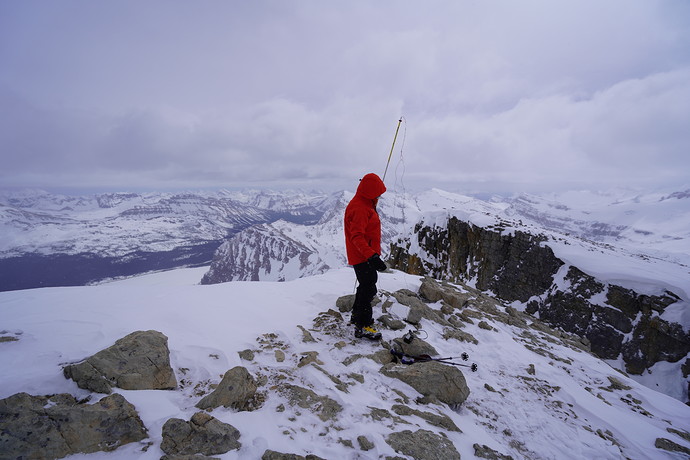Thanks for all the replies.
As background, most of my activations are part of multi-day tramping ('hiking if I must use the international word) trips. So I’m already carrying alpine tent, mat, winter sleeping bag, stove, food, overnight gear, ice-axe, maybe crampons, on top of the normal mountain clothing and radio gear.
Bivvy bags:
As such, my initial reaction to adding a bivvy-bag to the list is ‘not another thing to carry!’. However, I do see the advantage, and I do own one, so will probably give that a go.
Out of interest - do you use the bivvy-bag as you would in a survival situation - ie. crawl in with full boots & wet clothing (minus any crampons, clearly)? Or do you try and change out of those on the exposed mountaintop. I can see problems with both approaches …
Tarps:
Re tarps - again, I do own a tarp - more usually used by me in forest pitches than mountaintop ones. Very lightweight, though a slower deploy than the bivvy bag. More space to work, fewer issues with dragging snow in and getting the interior wet. But I’d need to carry some sort of additional pole to support it … as my iceaxe is only 700mm and not as long as a tramping-pole. Carrying which would remove the weight advantage over the bivvy bag. And much harder to set up in the windy situations which are giving me the problems.
Gloves etc:
I get very cold fingers - as far as I can see a result of damage from frost-bite a few years back - at least that’s when the issue started. Fingerless gloves do not work for me since then. I’ll persist experimenting with gloves to see if I can find a combination that is warm enough and tactile enough to work. As suggested - 2 pairs are probably required. One for normal tramping / camp warmth and a thinner pair for activations. Yes - re pencils. Yes re finding a nice chunky one! Yes re rite-in-the-rain notepads.
ZL1THH - I do like your idea. I think if I got into a good habit of ‘read-back’ I could get the info down just by recording one over of my audio,rather than the whole QSO as I’d been imagining. 'ZL1THH from ZL4NVW. Thankyou for the 3/1,31 your are 5/9, 59. Log time is 13:00 local! ’ Makes for a long over for those with dificult copy. But can always repeat the report. Apart from S2S, that would be enough for after-the-event logging. Might play with that idea.
Summit time:
Yes - as primarily a tramper, secondly an activator I’m guilty of rushed SOTA activations. I generally have a long way to go and limited daylight to get there, and so go for a quick deployment and ‘4 QSOs then finish off those-on-frequency’ rather than hanging around to give maximum benefit to chasers (something I do feel guilty for). Though if conditions merit, I’ll work both 40m & 20m as it’s good to keep those VK’s involved and feeling wanted.
My current antenna is an 80m EFHW, which I can extend either fully to stop unwinding at 40m. I’ve not timed it but 5-10 minutes for full deployment of radio & antenna feels about right. Which is enough time after a sweat-inducing climb for body temperature to seriously plummet.
I will always carry the 80m antenna for the easy, relaxed night-time QSOs from camp/huts (Huts on the air - no snow issues there - try it! - ... On The Air) . My quickest deploy would probably be the 6m long 40m centre-loaded vertical (slots over my SOTA-pole) + counterpoise. I might give that a go on some daytime activations but fear I’ll miss the closer ZLs with the low take-off angle.
Radio bags:
Yes - I currently use a dry-bag for radio gear. My issue with this is that I inevitably manage to get some moisture or snow off my gloves or from the environment on the inside of the bag when setting up, using the radio. Where it’s trapped for the rest of the trip.
The FT818 (mine at least) is very sensitive to moisture. Several times I have lost rx (goes ‘deaf’) on the lower bands when it’s stored in a damp pack for a long trip. Something there operating near its tolerances that can’t cope with the moisture, I guess. Comes good when it warms up, but deaf again once it cools until it spends a day or two in the hot water cupboard or sunny windowsill. Probably a fault with my radio, rather than a model-specific issue - but like all these intermittent issues, a real hard one to nail down.
OK. Long rambling reply from me there - but I think I’ve taken all your points into consideration, and many are things I’ll be trying.
Cheers & 73s
Matt - ZL4NVW




